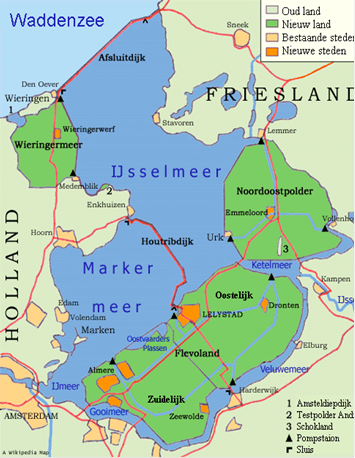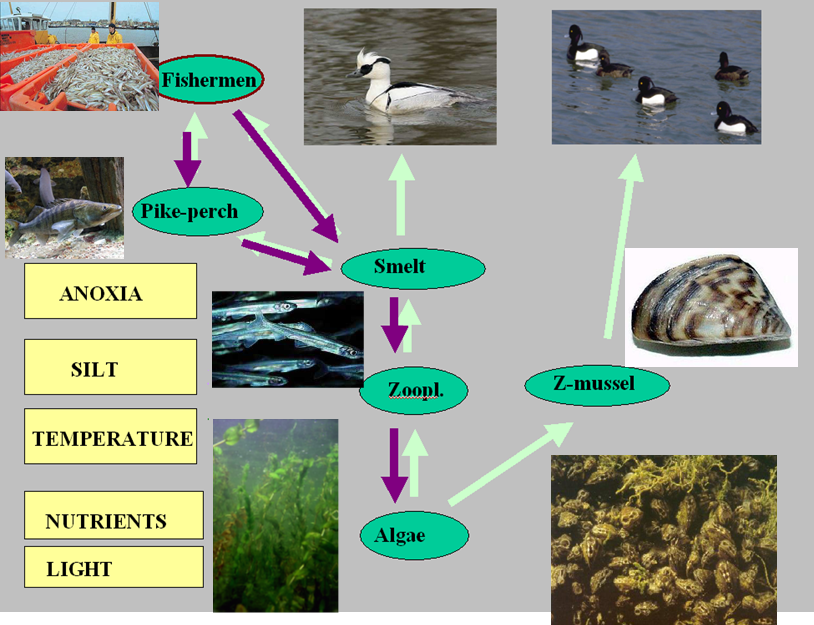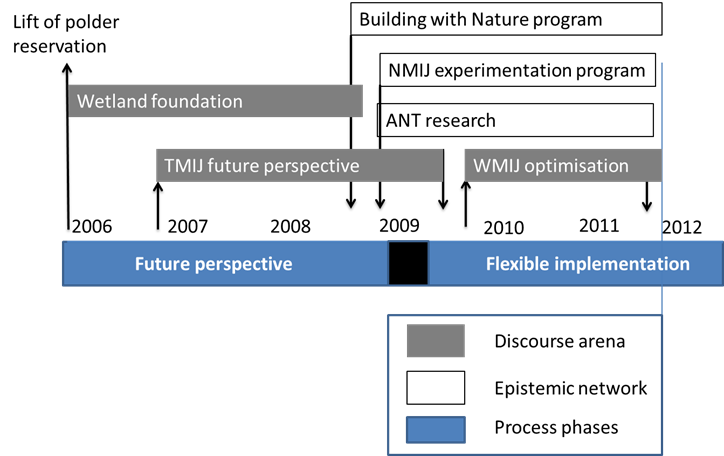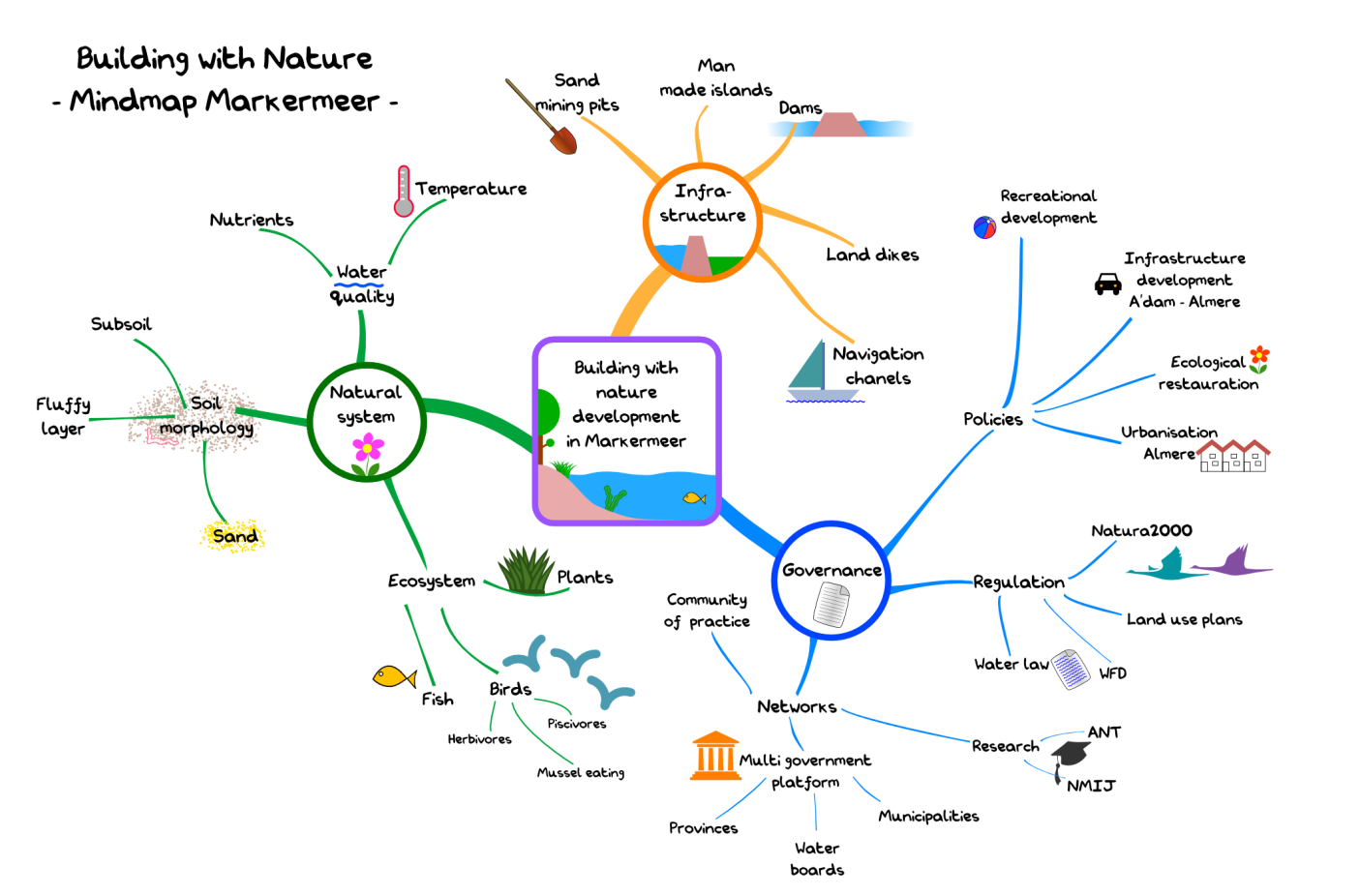Case study: The use of system representations in the IJssel-lake region
After a government decision to cancel the construction of a new polder in a closed part the IJssel-lake the existing, degraded lake system had to be revitalised. ‘Systems Thinking’ has been applied to determine best ways to restore and enhance sustainable development.

The IJsselmeer region is one of the largest freshwater lake systems in Europe. Before the ‘Afsluitdijk’ was completed in 1932, it was a brackish inland sea. The damming created flood safety and a freshwater reservoir, both indispensable conditions to reclaim large new polders (the green areas in the map). Reclamation of one of the designated polder areas, the Markermeer (the southwesterly part of the lake), was cancelled after the dike had been built. Thus the Markermeer is separated from the rest of the IJsselmeer.
Definitions of the IJsselmeer and Markermeer socio-ecological system depend on the perspective taken.
- A hydrological delineation will deal with the linkages with other lakes and catchments which discharge water into the lake (in winter) or receive water from the lake (in summer).
- The ecology is characterized by migratory birds and fish and must therefore include connections with faraway areas, like Greenland and Siberia.
- The management of the lakes is distributed over a variety of governments and institutions, some local, others provincial or national. Competences overlap and no clearly defined coordination mechanism exists.

Notwithstanding these definition problems, the lakes are usually referred to as being one system, probably because of its national history and because it is considered as a coherent set of water bodies in the European Water Framework Directive, which is the European basic planning framework for water quality. Also the sharp physical separation between the water body and the surrounding lands due to the dikes helps to create an image of a well-defined domain.
Figures present examples of representations of parts of the socio-ecological system. It is an attempt to capture ecological issues from a Natura 2000 perspective (Natura 2000 is European legislation to protect species and habitats). The system representation identifies some protected species and connects these with components which threaten to cause reductions in number of the species (water temperature, reduction in light entrance, declining quality of mussels, etc.). The picture gives an overview of the main policy issues on nature protection in the lake.

The time line starts with the decision of the national government to stop plans to reclaim Markermeer. This ‘lift of polder reservation’ initiated discussions on developing the ecological potential of Markermeer. The Wetland Foundation was a first NGO initiative, followed in 2007 by an inter-governmental platform (TMIJ – Toekomst Markeermeer-IJmeer) in charge of devising a future perspective. The resulting report (in 2009) was followed by a new inter-governmental initiative to formulate implementation strategies. During policy formation research was conducted by Building with Nature (see mindmap), NMIJ (Natuurlijker Markermeer-IJmeer) and ANT (Autonome Neerwaartse Trend).

To support policy formation system representation methods have been applied as shown in the table.

The use of mindmaps allows to structure and link relevant knowledge from a specific topic. Mindmaps show the user a network of connected and related concepts. Because all concepts can be linked together it is a form of knowledge mapping. There are for example no rules that imply that certain connections between concepts cannot be made. Free-form, spontaneous thinking is required when creating a mindmap, because the aim of mindmapping is to find creative associations between ideas. These techniques involve using line thicknesses, colors, pictures and diagrams to aid knowledge recollection (Davies 2010). In contrast to cause-effect or causal loop diagram the relationships and interactions are not specified.
